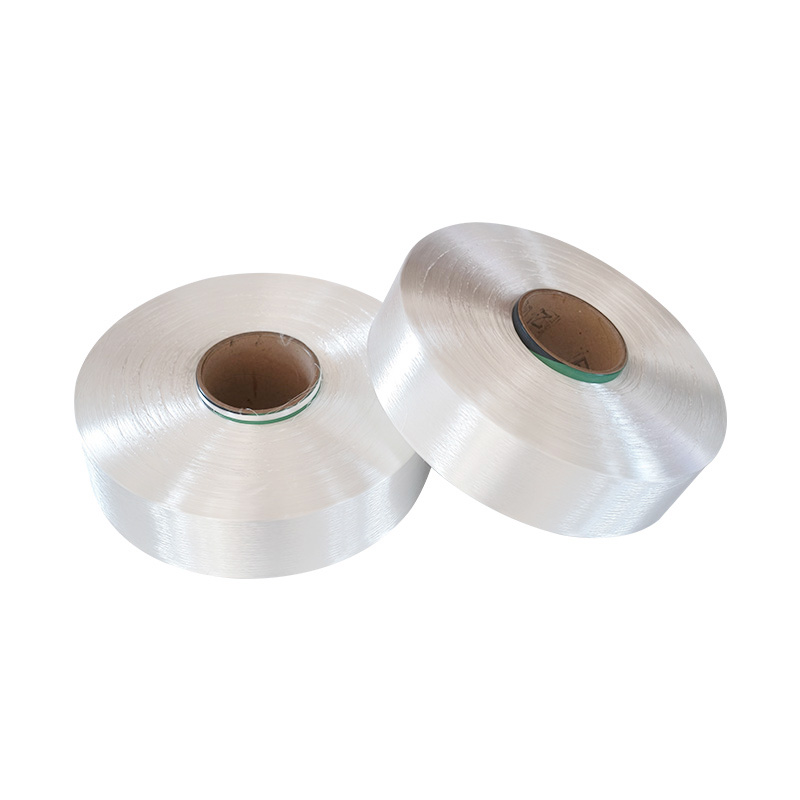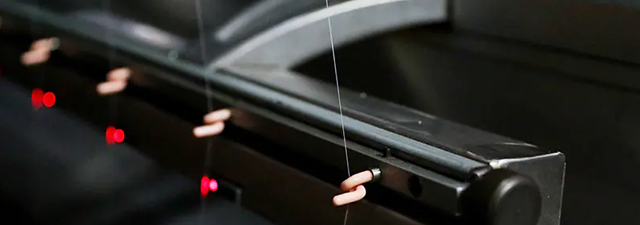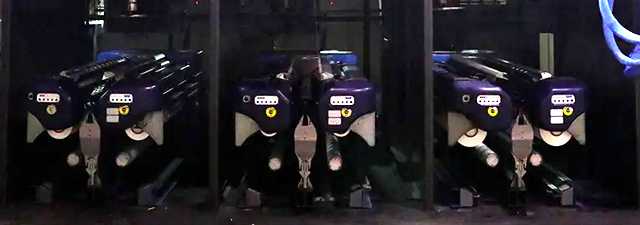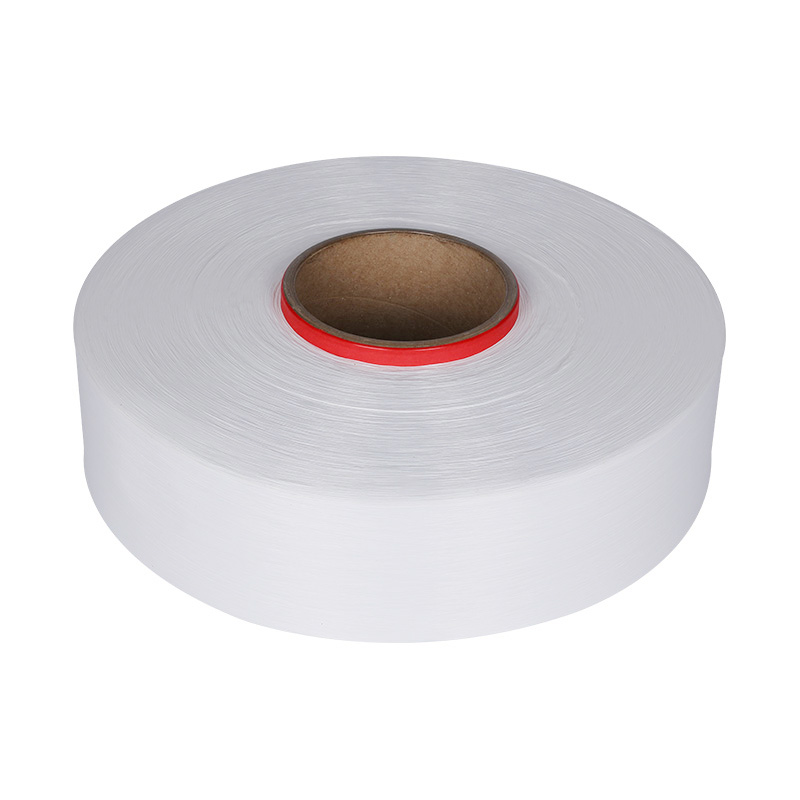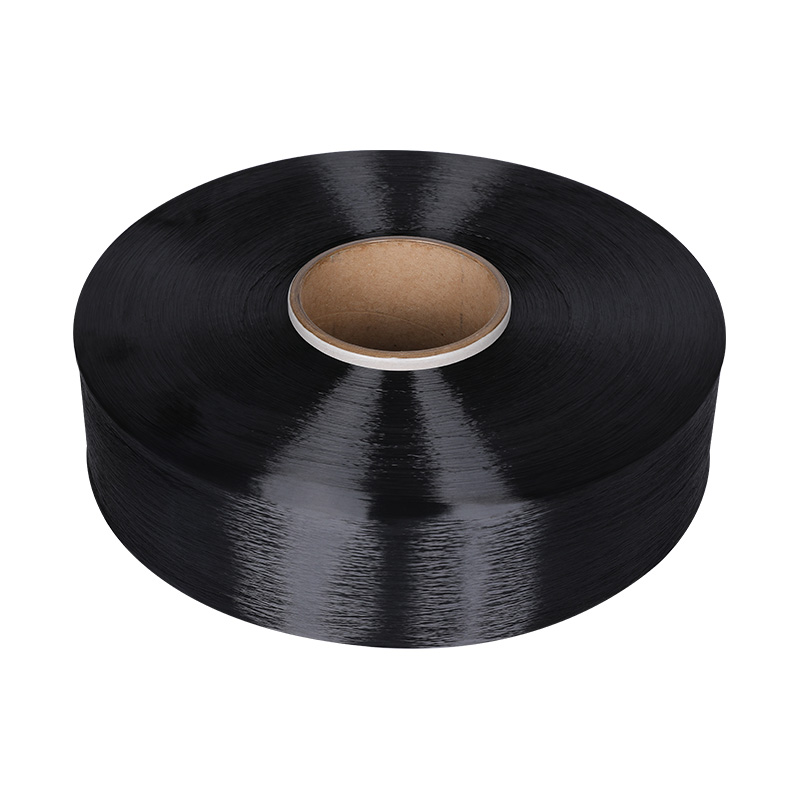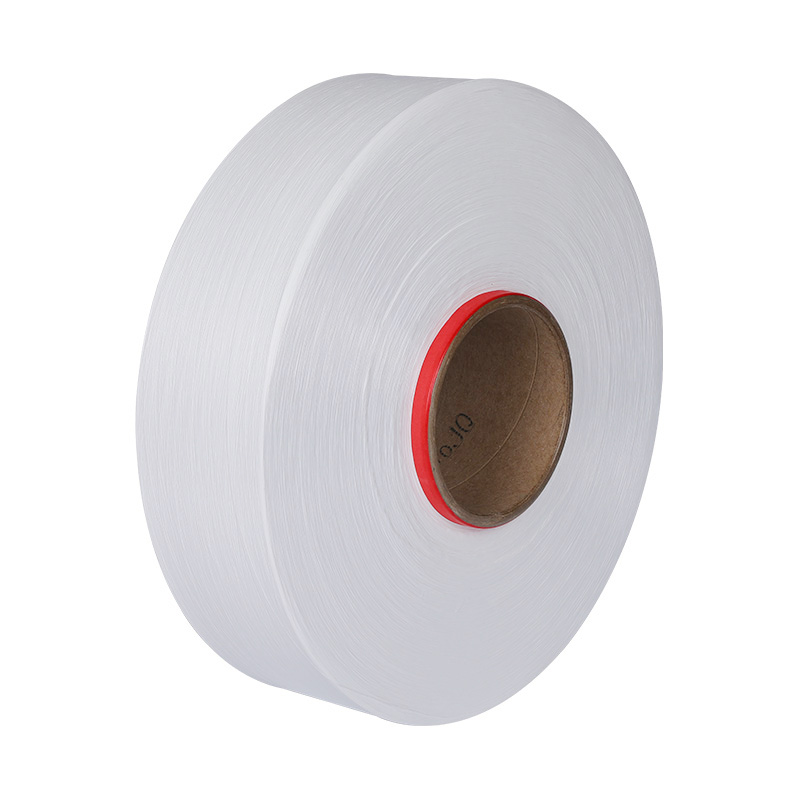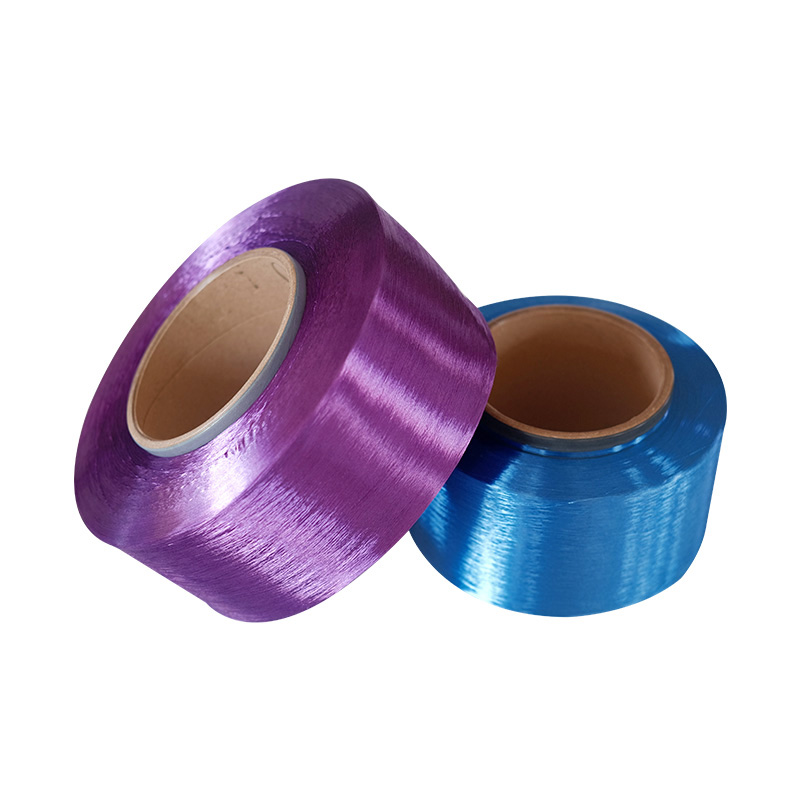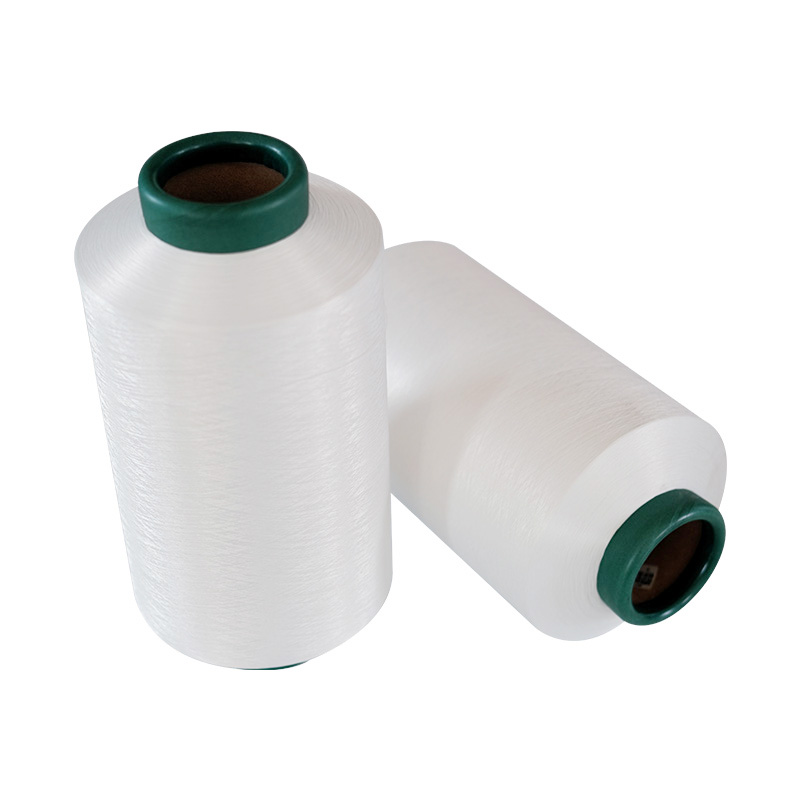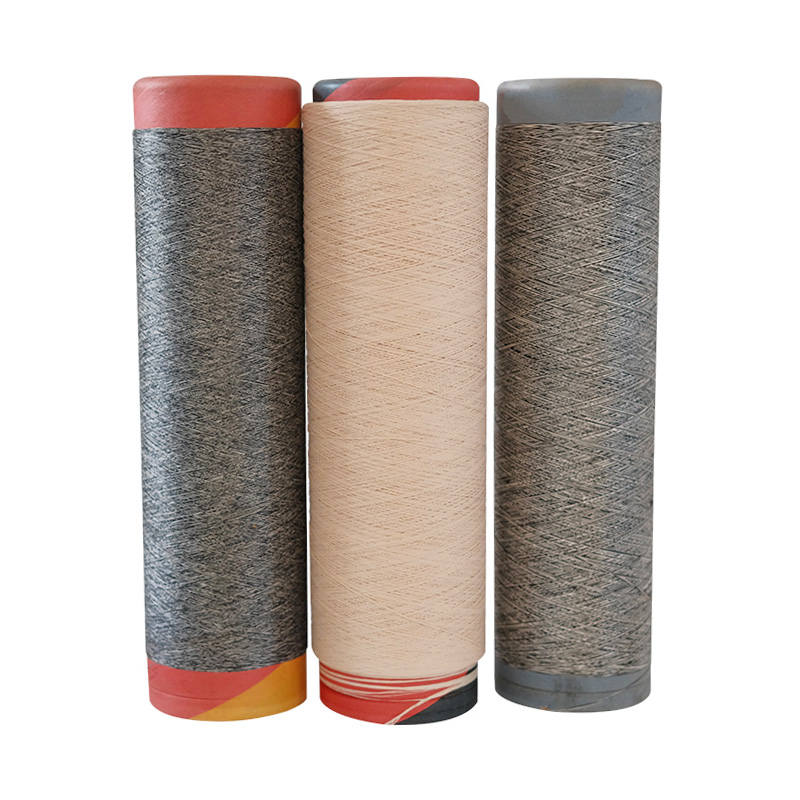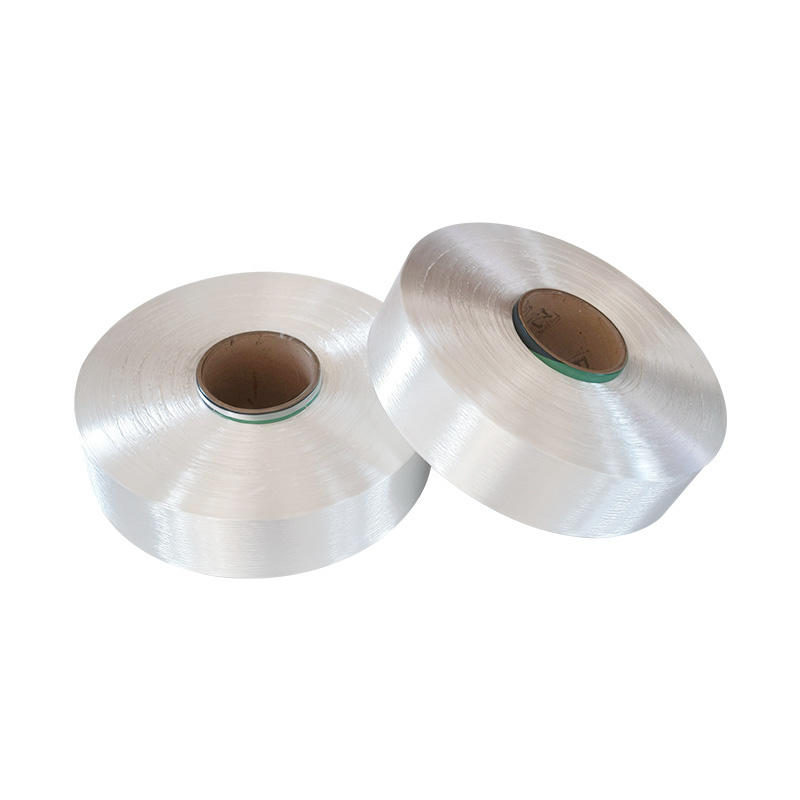The textile industry is in a perpetual state of evolution, driven by the relentless pursuit of materials that offer superior performance, stunning aesthetics, and responsible manufacturing. At the heart of this innovation lies a category of fibers that has redefined the possibilities of color and efficiency. The Cationic differentiated yarn series represents a significant scientific achievement in polymer chemistry, offering a glimpse into the future of fabric production. This series is not merely a single type of yarn but a comprehensive platform of engineered fibers designed to overcome the limitations of conventional dyeing processes. The journey of these yarns from laboratory curiosity to industrial staple is a testament to the power of material science. Their unique properties have opened doors to creative designs and sustainable practices previously thought challenging to achieve. This article delves deep into the science, applications, and undeniable advantages of this groundbreaking material.
Introduction to Cationic Dyeable Yarn
What is Cationic Dyeable Yarn?
Cationic dyeable yarn is a type of synthetic fiber that has been chemically modified to accept cationic dyes. Unlike conventional synthetic yarns, which require specific dyes and often high-pressure, high-temperature dyeing processes, cationic dyeable yarn is engineered to have a strong affinity for these positively charged dyes. This unique property allows for the creation of vivid, brilliant colors with excellent colorfastness and a more efficient dyeing process. The modification is not a superficial coating but an integral change to the molecular structure of the polymer itself. This foundational alteration empowers textile engineers and designers with greater flexibility and creative control over color than ever before. This specialized yarn is a significant innovation in the textile industry, providing manufacturers with a tool to achieve results that are both beautiful and technically superior.Why is it called "Cationic"?
The term "cationic" refers directly to the electrochemical process that defines its dyeing capability. It denotes the positively charged chemical groups that are introduced into the polymer chain of the yarn during its manufacturing. These positively charged sites act as highly effective "docking stations" for the negatively charged dye molecules. When the yarn is submerged in a dye bath containing cationic dyes, a powerful electrostatic attraction occurs, pulling the dye molecules onto the yarn's surface and bonding them securely. This strong ionic bond is the fundamental reason for the yarn's high dye uptake and superior color retention, which gives it its descriptive and scientific name. This process is far more efficient than the mechanical entrapment required by other dyeing methods.Brief History and Development
The development of cationic dyeable yarn was a direct and purposeful response to the pronounced limitations of dyeing conventional synthetic fibers, particularly polyester. Standard polyester requires a complex, energy-intensive process using disperse dyes under high pressure and temperature. Textile scientists sought a more efficient and versatile solution for coloration. By the mid-20th century, significant breakthroughs in polymer chemistry allowed for the precise modification of polyester fibers by introducing a different type of monomer into the polymer chain. This deliberate chemical change created a new fiber with distinct cationic properties, leading to the commercialization of Cationic Dyeable Polyester and other similar modified fibers. This innovation simplified the dyeing process, reduced energy costs, and opened up new possibilities for textile design and manufacturing that are still being explored today.Properties of Cationic Dyeable Yarn
The unique chemical structure of cationic dyeable yarn gives it a range of highly desirable properties that set it apart from conventional fibers. These properties make it a valuable asset in the textile industry, especially when vibrant colors and high performance are required. The combination of aesthetic and functional benefits is what makes this yarn so versatile across numerous applications.
Chemical Structure and Composition
Unlike regular polyester, which is a homopolymer of ethylene terephthalate, a typical cationic dyeable yarn like cationic dyeable polyester is a copolymer. During its polymerization, a small but critical amount of a third monomer containing a sulfonate group is introduced. This group is the key to the yarn's cationic dyeability, as it imparts a permanent negative charge to the fiber's internal structure and surface. When dyeing occurs, these negatively charged sites attract the positively charged cationic dye molecules, forming a strong and stable ionic bond. This specific and targeted interaction is the fundamental reason for its unique dyeing behavior and is a classic example of design at the molecular level.Dye Affinity and Colorfastness
The primary advantage of any yarn in the cationic differentiated yarn series is its exceptional dye affinity. It absorbs cationic dyes much more efficiently and at significantly lower temperatures than conventional yarns, resulting in a higher percentage of dye uptake and more complete color saturation. This strong electrochemical bond between the fiber and the dye also leads to outstanding colorfastness properties. Fabrics demonstrate remarkable resistance to fading from washing, light exposure, and crocking, which is the transfer of color through rubbing. The colors stay bright and true, even after repeated laundering or prolonged exposure to sunlight, ensuring the longevity and appearance of the final product.Strength and Durability
Despite its intentional chemical modification, cationic dyeable yarn retains the excellent physical properties of its conventional counterparts. It possesses high tensile strength, impressive resistance to abrasion, and good dimensional stability. These characteristics ensure that fabrics made from this yarn are durable and can withstand significant wear and tear. This is particularly important for applications like sportswear, uniforms, and industrial fabrics, where long-lasting performance is critical. The modification process is carefully calibrated to enhance dyeability without sacrificing the inherent robustness that makes synthetic fibers so useful.Softness and Texture
In addition to its functional benefits, cationic dyeable yarn can be engineered to have a softer, more luxurious hand feel. Its modified structure often results in a smoother surface morphology, which gives the final fabric a pleasant and comfortable texture. This makes it a great choice for next-to-skin garments, such as activewear, underwear, and casual apparel, where comfort is a top priority. The versatility in texture and hand allows manufacturers to create a wide range of products that are not only high-performing and colorful but also exceptionally comfortable and appealing to the touch.Types of Cationic Dyeable Yarn
The cationic differentiated yarn series encompasses a variety of fibers based on different polymer backbones. Each type offers a unique set of performance characteristics tailored for specific applications, demonstrating the versatility of the cationic modification technology.
Cationic Dyeable Polyester (CDP)
Cationic Dyeable Polyester (CDP) is arguably the most prevalent and economically significant type of cationic yarn. It is a modified version of standard polyester, a process that involves introducing a special co-monomer during polymerization. This chemical modification creates negatively charged sites within the polymer structure, giving it a powerful affinity for cationic dyes. This allows CDP to be dyed at a lower temperature and pressure than conventional polyester, which requires a more energy-intensive process with disperse dyes. A significant creative benefit is the ability to create unique two-tone or heathered effects when CDP is blended with regular polyester. Since the CDP will readily take on the cationic dye and the regular polyester will not in the same bath, a stunning two-color effect can be achieved in a single, efficient dyeing step, saving time, water, and energy.Cationic Dyeable Nylon
Similar to its polyester counterpart, cationic dyeable nylon is a version of nylon that has been chemically altered to accept cationic dyes. While conventional nylon can be dyed with acid or direct dyes, the cationic modification expands its dyeing capabilities and color potential. This type of yarn is often used in sophisticated blends with other fibers to achieve multi-color patterns and complex textures. Cationic dyeable nylon retains the inherent desirable properties of nylon, such as high strength, excellent abrasion resistance, and a characteristically smooth hand, making it a great choice for durable and aesthetically versatile textiles in both apparel and technical applications.Modified Acrylics
Acrylic fibers have a natural historical receptiveness to cationic dyes, but newer modified acrylics within the cationic differentiated yarn series have been further engineered to enhance dyeability and improve other performance attributes. Acrylic fibers naturally contain some negatively charged groups, making them a natural fit for cationic dyeing. These advanced modified versions often feature even better dye uptake and colorfastness properties. They are renowned for their soft, wool-like feel and are commonly used in products that require warmth and a pleasing texture, such as sweaters, blankets, and plush fabrics. The vibrant and lasting colors achieved with cationic dyes on modified acrylics also make them popular for decorative and craft applications where color integrity is paramount.Manufacturing Process
The production of high-quality cationic dyeable yarn is a meticulous process that requires precise control over raw materials and a specialized spinning technique. This integrated process ensures the yarn has the necessary chemical structure to accept cationic dyes efficiently while maintaining excellent physical properties.
Raw Materials
The manufacturing journey begins with the stringent selection of specific raw materials. For cationic dyeable polyester, the main components are purified terephthalic acid (PTA) and monoethylene glycol (MEG), which are the standard building blocks for polyester. However, a crucial third component is added: a modifying monomer. This monomer, often a metal sulfonate salt, is what gives the final yarn its unique cationic dyeability. The purity and precise proportion of this monomer are critical; without this specific chemical addition, the polymer chain would not develop the negatively charged sites essential for ionic bonding with dyes.Spinning Techniques
The primary manufacturing method used is melt spinning, a continuous and efficient process. In this technique, the carefully prepared raw materials are melted into a viscous liquid and then extruded under pressure through a spinneret—a precision device with dozens of tiny holes—to form continuous filaments. The extruded filaments are then cooled, systematically stretched in a drawing process to orient the polymer molecules and develop strength, and finally wound onto spools. For cationic dyeable yarn, the entire melt spinning process must be meticulously controlled to ensure the modifying monomer is evenly distributed throughout the entire polymer mass, creating a consistent final product with uniform dyeability.Chemical Modification
The chemical modification is the core technological innovation of the process. It occurs during the polymerization step when the modifying monomer is introduced and chemically incorporated into the growing main polymer chain. The amount of this monomer added is carefully calculated and controlled to achieve the desired level of dyeability without negatively impacting the yarn's other essential properties, such as its tensile strength and elasticity. This controlled and integrated modification allows for a predictable and reliable result, which is crucial for textile manufacturers who depend on consistent material performance for their production schedules and quality standards.Quality Control
Throughout the entire process, from polymerization to winding, rigorous quality control is paramount. The yarn is tested at multiple stages to ensure it meets strict standards for dye affinity, strength, elongation, and uniformity. Advanced laboratory tests include measuring the yarn's tenacity, or breaking strength, its elongation at break, and its linear density. Critically, final quality checks always involve dyeing small representative samples to confirm that the yarn exhibits the expected color brilliance, uniformity, and fastness properties. This continuous monitoring and verification guarantee that the final product is a high-quality, reliable material ready for downstream textile production.Dyeing Process
The dyeing of cationic dyeable yarn is a showcase of efficiency, leveraging the yarn’s unique chemical structure to achieve vibrant and long-lasting colors through a strong electrostatic bond rather than mere mechanical diffusion.
Cationic Dyes: Types and Characteristics
Cationic dyes, also known in the industry as basic dyes, are a specialized class of synthetic dyes whose molecular structure contains a positive charge. They are manufactured in a vast spectrum of shades and are specifically formulated to bond with the negatively charged sites on modified fibers like those in the cationic differentiated yarn series. These dyes are renowned for their exceptional brightness and high tinctorial strength, meaning a small amount of dye can produce a very deep shade. Their high affinity for the modified yarn makes them incredibly effective, allowing for a much more complete and even dye uptake compared to other dye types on their respective fibers, resulting in unparalleled color purity.Dyeing Methods
The most common industrial dyeing method for cationic dyeable yarn is exhaust dyeing, which is typically performed in a heated aqueous bath. This method involves immersing the yarn package or fabric into a circulating dye solution until the dye is substantially "exhausted" from the bath and absorbed by the fiber. Because of the strong ionic bond that forms, the process is very efficient, requiring less dye and water to achieve the same depth of shade. When dyeing innovative blended fabrics—such as a mix of CDP and regular polyester—a sophisticated single-bath, two-step process can be employed. First, the cationic dye is applied to color the CDP component, and then a disperse dye is added to the same bath to color the conventional polyester. This method creates striking two-tone or heathered effects with unparalleled efficiency, saving time, water, and energy resources.Factors Affecting Dyeing Results
Achieving optimal and consistent dyeing results requires careful control of several critical factors. The pH of the dye bath is crucial, as it directly affects the ionization state of both the dye molecules and the fiber's ionic sites; a slightly acidic environment is generally preferred to promote optimal attraction. Temperature control is also key; while cationic dyeable yarn can be dyed at lower temperatures than conventional polyester, the process still requires controlled heat to help the dye molecules migrate and penetrate the fiber fully. Controlling the rate of temperature increase is vital to ensure a level and even dye uptake. Finally, the use of specialized dyeing auxiliaries, such as leveling agents and retarders, can help control the rate of dye absorption, preventing uneven or blotchy results and ensuring a uniform, brilliant color from the core to the surface of the yarn.Advantages of Using Cationic Dyeable Yarn
The unique chemical properties of cationic dyeable yarn translate into significant and measurable benefits for the entire textile supply chain, from manufacturers and designers to end consumers. Its use leads to more efficient production, enhanced product quality, and greater creative freedom.
Improved Dye Uptake
One of the most notable technical advantages is the dramatically improved dye uptake. The strong ionic bond between the cationic dyes and the modified fiber ensures that the dye is absorbed completely and efficiently from the dye bath. This high exhaustion rate means significantly less dye is left in the wastewater, reducing environmental pollution and lowering the cost associated with waste dye and subsequent water treatment. The high dye uptake also results in richer, more uniform color saturation throughout the fabric, which is difficult and often more costly to achieve with conventional dyeing methods, particularly for deep and intense shades.Enhanced Color Brilliance
Cationic dyes are renowned throughout the industry for their exceptional color brilliance and purity. The colors produced on cationic dyeable yarn are exceptionally vibrant, clean, and intense, often with a luminous quality. This brilliance is a key selling point for a wide range of products, from high-performance athletic wear that stands out on the field to decorative home textiles that enhance a living space. The luminosity and depth of the colors give the final product a premium and eye-catching appearance that commands attention in the market and offers designers a powerful tool for creating visually stunning garments and products.Better Colorfastness
Another major benefit that extends the life of the product is better colorfastness. The robust ionic bond formed during the dyeing process ensures that the dye molecules are securely locked into the fiber's molecular structure. This makes the colors highly resistant to fading from washing, light exposure, and rubbing, a property known as crocking. Products made with this yarn maintain their original color intensity and vibrancy over an extended period of use and care, which is a crucial factor for consumer satisfaction, brand reputation, and overall product durability and value.Reduced Dyeing Time and Cost
From a manufacturing and economic perspective, using cationic dyeable yarn leads to substantially reduced dyeing time and overall cost. Unlike conventional polyester, which requires high temperatures and pressures, cationic dyeable yarn can be dyed at atmospheric pressure and lower temperatures, saving a significant amount of energy. The high dye exhaustion rate also means less dye is required to achieve a deep shade, reducing material costs. Furthermore, the possibility of dyeing blends in a single bath saves time, water, and energy. These cumulative savings in time, energy, water, and materials directly contribute to a more cost-effective and environmentally friendly production process, improving the bottom line.Applications in Textiles
The unique combination of properties offered by the cationic differentiated yarn series makes it suitable for a vast and diverse range of applications, from high-performance apparel to durable home goods and technical textiles.
Apparel (Fashion, Sportswear)
In the dynamic apparel industry, cationic dyeable yarn is highly valued for its ability to create vibrant, colorfast garments that endure trends and wear. In sportswear and activewear, its enhanced moisture-wicking properties, durability, and soft texture make it a top choice for athletic jerseys, yoga pants, and base-layer T-shirts. The yarn's unique ability to create heathered or two-tone effects in a single dye bath is also a significant advantage for designers, allowing for more complex, nuanced, and visually appealing fabrics without additional processing steps. Beyond performance wear, it is also used in high-end fashion to produce lightweight fabrics with a luxurious hand and brilliant, lasting colors that define a collection.Home Textiles (Upholstery, Curtains)
The durability and exceptional colorfastness of cationic dyeable yarn make it an excellent material for home textiles that face constant use and exposure. It is frequently used in upholstery fabrics for furniture, where resistance to fading from sunlight and abrasion from daily use is absolutely crucial for longevity. The yarn's ability to hold color vividly and its capacity for a smooth texture also make it a great choice for curtains, bedding, and decorative pillows, where vibrant, long-lasting colors contribute significantly to the aesthetic and atmosphere of a living space. It allows homeowners to maintain a fresh and vibrant interior decor for years.Industrial Fabrics
In addition to consumer goods, the cationic differentiated yarn series also finds important niches in industrial and technical fabric applications. Its strength, durability, and resistance to environmental factors make it suitable for a variety of specialized uses. While conventional materials might be used for heavy-duty applications, these modified yarns are ideal for products like flags, banners, and awning fabrics where color brilliance and colorfastness against weathering are key requirements. This expansion into technical applications underscores the yarn's utility beyond traditional apparel and home goods, highlighting its role in functional and demanding environments.Comparison with Conventional Yarns
To fully appreciate the advantages of the cationic differentiated yarn series, a direct comparison with conventional yarns, particularly traditional polyester, is essential. This comparison highlights its clear superiority in dyeing efficiency, environmental impact, and long-term cost-effectiveness.
Dyeing Efficiency
The most significant difference lies in the fundamental dyeing process itself. Conventional polyester requires disperse dyes and a high-temperature, high-pressure dyeing environment, often reaching temperatures of 265°F (130°C) to force the dye into the fiber. This process is notoriously energy-intensive and time-consuming. In stark contrast, cationic dyeable yarn can be dyed at atmospheric pressure and lower temperatures, typically at or below boiling (212°F or 100°C), using cationic dyes. This dramatic reduction in thermal requirement not only saves a substantial amount of energy but also significantly reduces the total dyeing cycle time, allowing for a faster, more efficient, and more responsive manufacturing operation.Environmental Impact
Cationic dyeable yarn presents a more environmentally friendly profile for several compelling reasons. The significantly lower dyeing temperatures directly translate to a reduced carbon footprint from lower energy consumption. Furthermore, the high dye uptake of cationic dyeable yarn means that far less dye is left unused in the wastewater, reducing the load on effluent treatment plants and minimizing the risk of water pollution. Conventional dyeing processes often produce large volumes of highly colored wastewater that requires significant chemical, energy, and financial resources to clean to regulatory standards. By reducing dye runoff and energy use at the source, cationic dyeable yarn contributes to a more sustainable and responsible textile manufacturing process.Cost Analysis
A thorough cost analysis often reveals that while the initial raw material cost of cationic dyeable yarn can be slightly higher than conventional yarn due to the chemical modification process, the overall total manufacturing costs are frequently lower. The savings are realized from several key areas: Reduced Energy Costs from lower dyeing temperatures and shorter processing times; Lower Dye Costs due to the high exhaustion rate requiring less dye; and Lower Water and Chemical Costs as less water is used, and fewer chemicals are required for both the dyeing process and subsequent wastewater treatment. These cumulative savings make cationic dyeable yarn a more economical and sustainable choice in the long run, especially for large-scale production runs where efficiency gains are multiplied.| Factor | Conventional Polyester Yarn | Cationic Dyeable Yarn |
|---|---|---|
| Dyeing Temperature | Low (100°C / 212°F) | >High (130°C / 265°F) |
| Dyeing Pressure | High Pressure Required | Atmospheric Pressure |
| Dye Exhaustion Rate | Moderate | Very High |
| Colorfastness | Good | Excellent |
| Energy Consumption | High | Low |
Environmental Considerations
The modern textile industry is acutely aware of its environmental footprint, and the adoption of the cationic differentiated yarn series offers several tangible pathways toward greater sustainability and reduced ecological impact.
Sustainability Aspects
The primary sustainability benefit of cationic dyeable yarn is its energy efficiency. By requiring substantially lower dyeing temperatures and less processing time, it drastically reduces the thermal energy consumption associated with heating large industrial dye baths. This direct reduction in energy use leads to a lower carbon footprint per meter of fabric produced, helping the industry combat climate change. Additionally, the high dye uptake means less dye is needed per kilogram of fabric to achieve a deep shade, which in turn reduces the reliance on the production of chemical dyes themselves, a process that also consumes energy and resources.Waste Reduction
Waste reduction is another key environmental advantage. With conventional dyeing, a considerable portion of dye often remains unexhausted in the dye bath and is discharged as highly colored wastewater, which is expensive and energy-intensive to treat. The cationic dyeing process, due to its exceptionally high exhaustion rate, leaves significantly less residual dye in the effluent. This not only lowers the chemical load and potential toxicity of the wastewater but also reduces the burden on water treatment facilities, conserving water and minimizing the risk of environmental pollution in local waterways.Eco-friendly Dyeing Practices
The inherent efficiency of the cationic dyeing process aligns with and encourages the adoption of more eco-friendly dyeing practices overall. The reduced consumption of chemicals, water, and energy makes the entire process cleaner from the outset. When this technology is combined with other forward-thinking sustainable practices—such as using recycled PET as a raw material source or implementing closed-loop water systems that recycle water and heat within the factory— cationic dyeable yarn becomes a crucial component in creating a truly sustainable and responsible textile product. This holistic shift towards efficiency and minimal waste represents a major step forward for the entire industry.| Aspect | Impact of Cationic Dyeable Yarn | Benefit |
|---|---|---|
| Energy Use | Lower dyeing temperature reduces energy demand | Reduced carbon emissions, lower cost |
| Water Use | High exhaustion rate means less water needed for rinsing | Conserves water resources |
| Chemical Waste | Less unused dye in effluent | Reduces water pollution, lowers treatment costs |
| Process Efficiency | Faster dyeing cycles and potential for single-bath dyeing of blends | Increases production capacity, reduces overall resource use |
Future Trends in Cationic Dyeable Yarn
The textile industry is dynamic, and the cationic differentiated yarn series is poised to be at the forefront of several key trends, driven by growing global demands for enhanced performance, radical sustainability, and material innovation.
Innovations in Yarn Technology
Future innovations will likely focus on enhancing the multifunctionality of cationic dyeable yarn. Research and development are ongoing to create yarns with even better inherent moisture management properties, intrinsic antimicrobial features, or integrated smart technologies for sensing or temperature regulation. Researchers are also exploring novel polymer blends and advanced spinning techniques, such as bicomponent spinning, to create yarns that are not only exceptionally dyeable but also possess superior softness, stretch, or strength for highly specialized applications, pushing the boundaries of what textiles can do.New Dye Developments
The future of the cationic differentiated yarn series is also intrinsically tied to the parallel development of new, high-performance, and sustainable dyes. Chemical engineers are working on creating next-generation cationic dyes derived from bio-based sources and certified as non-toxic, while still maintaining the vibrant color and exceptional fastness of traditional synthetic dyes. These new advanced formulations will further reduce the environmental impact of the entire textile production chain and meet the growing consumer and regulatory demand for greener, cleaner products without compromising on color quality or performance.Market Outlook
The global market for cationic dyeable yarn is expected to experience steady growth in the coming years. This growth is driven by the increasing popularity of performance sportswear, the rising consumer awareness of sustainable products, and the need for industrial efficiency. As brands and consumers become more educated about the environmental and performance benefits, the adoption of this yarn technology will likely expand into new and unexpected sectors. Its inherent versatility, combined with its compelling sustainable advantages, positions it not just as a niche product, but as a key material for the future of intelligent and responsible textile manufacturing on a global scale.Conclusion
The Cationic differentiated yarn series represents a profound and impactful leap forward in textile science and technology. It offers a powerful and synergistic combination of aesthetic brilliance, functional efficiency, and environmental responsibility. Its unique chemical modification facilitates superior dye uptake through ionic bonding, resulting in colors that are exceptionally vibrant and remarkably colorfast. This enhances the visual appeal and durability of fabrics while simultaneously streamlining the manufacturing process on an industrial scale. The advantages are clear and compelling: significantly reduced dyeing temperatures, lower energy consumption, less chemical waste, and the potential for creative color effects. These benefits establish it as a more sustainable and cost-effective alternative to conventional yarns. As the industry continues to push aggressively for innovation and environmental responsibility, the cationic differentiated yarn series is strategically positioned to play a central and growing role, driving the development of high-performance, aesthetically diverse, and eco-friendly textiles for a vast and expanding range of applications. It is a testament to how material science can create solutions that benefit manufacturers, designers, consumers, and the planet alike.
 +86-0571-82795522
+86-0571-82795522 
 LANGUAGE
LANGUAGE 
 English
English